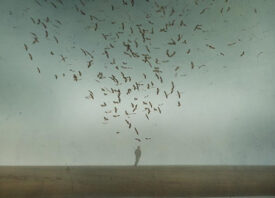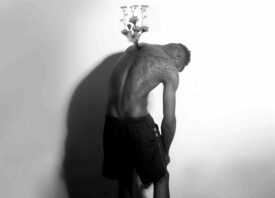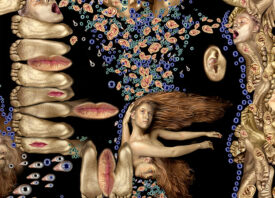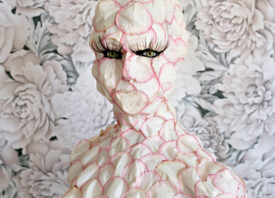Search this site
Surreal Photography: 12 Creative Techniques to Try
“I would never really call these finished pieces ‘photos,’” the digital artist Tony Nahra once told me. He was referring to a surreal photography series made at the beach: while all the images were originally made with a camera, he’d manipulated them extensively by removing and distorting objects, combining elements, and layering different textures.
It’s been almost a century since the early Surrealist pioneers, such as Maurice Tabard and Lee Miller, experimented with double exposures, solarization, infrared photography, and other techniques. But “surreal photography” is just as difficult to define today as it was back then. Instead of capturing reality, this is one photographic genre that intentionally distorts the world around us. We still ask ourselves, “Is this photography, or is it something else?”
In 2023, despite that elusive quality—and perhaps because of it—new generations of artists continue to incorporate Surrealist techniques in their work. Some use traditional darkroom tools, while others create their own effects on the computer (or phone). In the process, they each challenge our ideas about what “photography” is, and, perhaps more importantly, what it can be.
Combination printing for surreal photography
This labor-intensive 19th-century technique isn’t as common in the age of Photoshop, but it played an important role in the history of surreal photography. Think of it as the analog version of a composite.
To try it, you’ll need access to a darkroom with an enlarger. Use several negatives (two or more) to create a composition on a single piece of paper. It can help to sketch out your idea before shooting the individual components.
Digital composites
For those without access to a darkroom, digital tools offer an alternative. Pelle Cass goes this route when creating his surreal photography: every image is composed of many frames combined during post-production.
He does this by setting up his tripod in a single location, taking hundreds of shots, and then rearranging the elements in Photoshop. It is not a quick and easy process: Cass will spend weeks perfecting his images in post-production.
Photoshop tools for surreal photography
Beyond compositing, post-processing tools like Photoshop offer an array of creative options. To start, try the Liquify filter and the warp tool to distort elements of your photos. You can also use mobile apps like Snapseed to experiment with different edits and manipulations.
Collages
Surrealists have played with collage since the early days of Max Ernst’s experiments, so consider this cut-and-paste method when creating imaginative compositions. In addition to cutting, collages can also be made through layering. The artist Susana Blasco, for example, created a series of absurd and mesmerizing collages using vintage photos and regular household items, such as popcorn and sunflower seeds.
Set builds for surreal photography
The famed surreal photographer Angus McBean originally got his start as a set designer, a skill that came into play during many of his studio sessions. If it doesn’t exist in the “real world,” build it yourself.
While creating a full-scale set can be time-consuming and costly, miniatures are another option for today’s photographers. Mark Peterman, for his part, has dreamed up a variety of fictional locations using miniature models.
Solarization
Discovered by Lee Miller and developed in collaboration with Man Ray, this darkroom technique involves exposing your print to light at just the “wrong” moment to create reversed tones. The Virginia Museum of Fine Arts has a quick tutorial to help you get started.
Photograms
Another favorite of Man Ray, this cameraless, surreal photography technique is done in the darkroom by placing objects directly onto photo-sensitive paper and exposing it to light. Experiment with items of various transparencies to create depth.
The photographer Rebecca Najdowski used a color darkroom to create her series of electric photograms, made using organic objects collected from the desert.

Expired film for surreal photography
Expired film, while unpredictable, can create uncanny effects, as seen in Paul Hoi’s Polaroid photos of Iceland. When shooting on expired film, expect light leaks, color shifts, fog and ghosting, and other surprises.

Infrared photography
For another surreal series—this time, shot in New Zealand—Paul Hoi chose a mirrorless digital camera and an infrared filter. If you prefer shooting film, you can try to get your hands on some expired and increasingly rare Kodak Aerochrome.
Multiple exposures for surreal photography
No article on surreal photography would be complete without double (or multiple) exposures—the process of shooting a piece of film twice to create overlapping, superimposed images. One easy way to do this is to shoot a roll of film, rewind it, and then reload it and shoot it again. You can also create a similar effect digitally in Photoshop.
Check out our group show from a few years back for inspiration (it includes this surreal photograph by Katie Oak Lionheart).
Film soup
“Film soup” describes any kind of liquid that you soak your film in before developing. Popular choices include lemon juice, soap, tea, or wine. The photographer Brigette Bloom used urine to create this image. These substances will damage the film’s emulsion, resulting in surreal effects like freckling, color changes, ghosting, and more.
Mirror images for surreal photography
The Surrealist photographer Florence Henri was a master of reflections, often using mirror images to create optical illusions. Today, photographers continue to blur the lines between reality and imagination using this simple but powerful tool. Don’t be afraid to use mirrors in unconventional ways and unexpected places: consider this image, The Mirror Suitcase Man by Rui Calcada Bastos, for inspiration.
Read this next: Meet David Dettmann, the Unit Stills Photographer Who Captured Everyone’s Favorite Episode of Black Mirror











